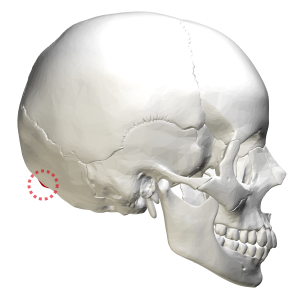The Physical Effects of Technology
What are the physical effects of technology use? In a previous post on the Saratoga Spine blog we talked about growing concern over a new phenomenon dubbed text neck. Additional research suggests an even more significant impact to our bodies. But, not all experts agree.
What is Text Neck?
Text neck, also called tech neck or forward head posture (FHP), is a condition resulting from poor posture typically displayed by individuals looking down at a smartphone or technological device.
In the neck, or cervical region, the spine curves toward the front of the body. When an individual is looking down toward the ground, or their phone, the spine loses this curve. The spine is designed to allow for this motion. However, when an individual stays in this position for long periods of time the soft tissues around the spine can stretch and become strained.
The Physical Effects of Technology
When this posture is repeated over long periods of time, as it is with prolonged technology use, it can lead to stretched muscles, muscle tears, spine misalignment and ruptured vertebral discs. One study even suggested that text neck may be affecting our bone growth. Some experts question this and are looking for more data before drawing a conclusion. Let’s take a closer look at the debate.

Source: Wikimedia https://commons.wikimedia.org/wiki/File:External_occipital_protuberance_-_lateral_view2.png
Neck Anatomy
The top of our spine is connected to the base of the skull and the top two vertebrae allow for a wide range of motion in our head and neck.
In addition, the rear of the skull is connected to the seventh cervical vertebrae by a ligament called the nuchal ligament. This ligament limits the range of motion of the neck. The point at which this ligament connects to the rear base of the skull is called the external occipital protuberance (EOP).
EOP Sizes
The EOP has long been studied as it relates to the evolution of the human species. Variations in the size of the EOP have been seen in different ages, sexes and populations. In addition, scientists have long known that the EOP can grow larger as a result of the normal aging process. Historically, the older the individual the more likely they were to have an enlarged or extended external occipital protuberance.
An enlarged EOP can result in severe neck pain.
In a recent study published in Nature, researchers reported a strange finding when looking at how likely individuals were to have an enlarged EOP. Individuals in their 30’s were least likely to have an extended EOP. As people aged into their 40’s, 50’s and 60+ each decade brought an increased chance of developing the additional bone growth. This is expected as individuals age. However, individuals in the 18-29 year old age group were most likely to have an enlarged EOP.
Scientists believe the additional bone growth in the younger age group is a result of them looking down at devices for long periods of time when they were young. Critics are asking for more data to confirm that this isn’t a part of the normal adolescent growing process or related to the normal differences in the EOP across different populations.
Effects of Significant Technology Use
Many of us have already noticed some effects of our increased use of technology in the form of sore necks and backs. But what will be the long term effects? That remains to be seen.
In the meantime, remember to focus on proper posture, take frequent breaks from technology and use exercise and stretching to help minimize neck pain related to technology use.
References
- https://www.nature.com/articles/s41598-018-21625-1
- https://en.wikipedia.org/wiki/External_occipital_protuberance
- https://www.forbes.com/sites/kristinakillgrove/2019/06/20/no-your-kids-evil-cell-phone-wont-give-them-horns/#60c9094c2bc1
- https://www.jprasurg.com/article/S1748-6815(15)00304-6/fulltext
